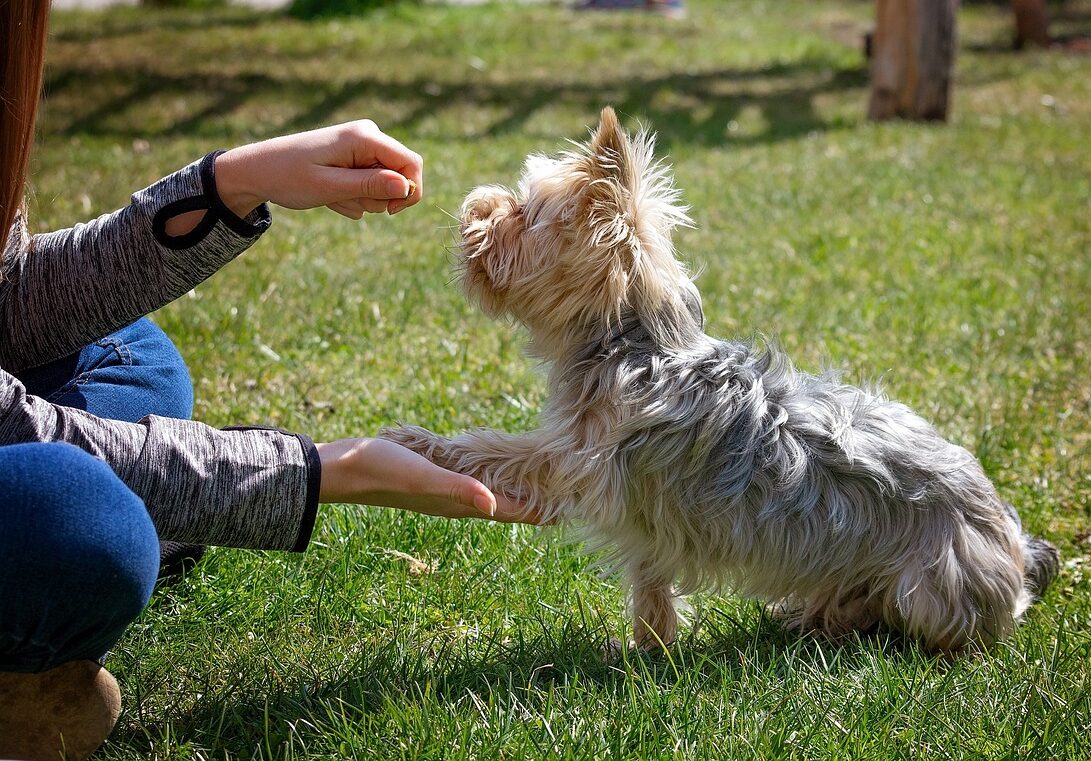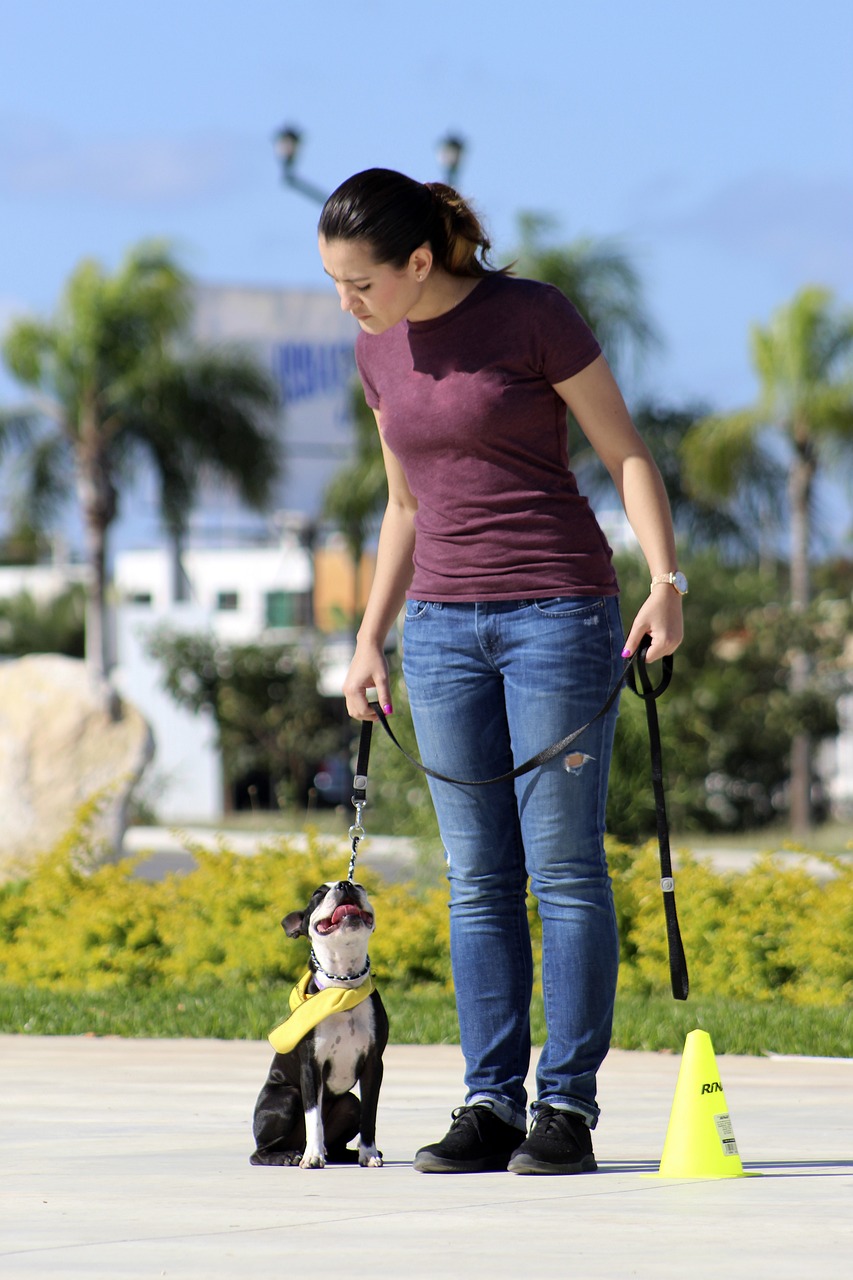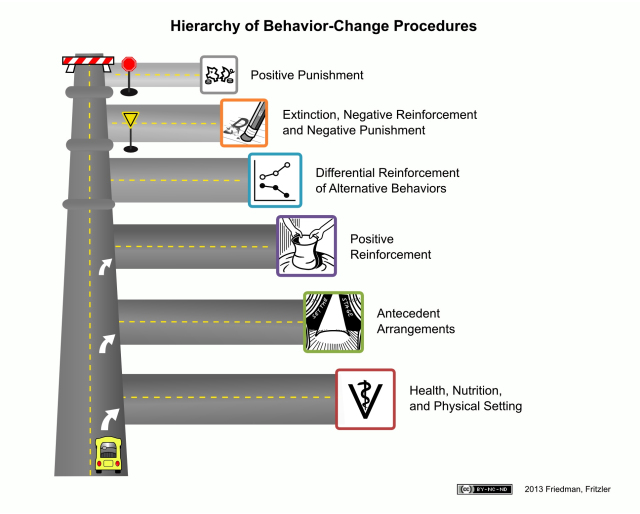 Training a dog, whether it’s a puppy or an older dog, begins with understanding that consistency and patience are key. Dogs thrive on routine and clear communication, so establishing a predictable schedule and using consistent commands will help your dog understand what you expect. Start with basic commands like “sit,” “stay,” “come,” and “leave it.” Use positive reinforcement, such as treats, praise, or toys, to reward your dog for desired behaviors. Avoid punishment, as it can create fear and confusion; instead, redirect unwanted behaviors and reward good ones. Training sessions should be short—5 to 15 minutes at a time—to keep your dog engaged without overwhelming them.
Training a dog, whether it’s a puppy or an older dog, begins with understanding that consistency and patience are key. Dogs thrive on routine and clear communication, so establishing a predictable schedule and using consistent commands will help your dog understand what you expect. Start with basic commands like “sit,” “stay,” “come,” and “leave it.” Use positive reinforcement, such as treats, praise, or toys, to reward your dog for desired behaviors. Avoid punishment, as it can create fear and confusion; instead, redirect unwanted behaviors and reward good ones. Training sessions should be short—5 to 15 minutes at a time—to keep your dog engaged without overwhelming them.
(Image of Yorki Training by Petra from Pixabay)

Older dogs may take longer to adapt to new training compared to puppies, but they are entirely capable of learning. Patience is especially important when working with older dogs, as they may have ingrained habits that require more effort to reshape. Begin with manageable tasks and gradually build up to more complex commands or behaviors. Tailor the training to your dog’s physical and mental abilities, especially if they have age-related conditions like arthritis or diminished hearing. For older dogs, establishing trust is crucial; make training sessions enjoyable and stress-free to encourage a strong bond and eagerness to learn.
(Image of Boston Terrier Training by Andrés Carlo from Pixabay)
Socialization and mental stimulation are vital components of training at any age. Expose your dog to various environments, people, and other animals in a controlled and positive manner to build their confidence and adaptability. Incorporate games, puzzles, and interactive toys to challenge their mind and prevent boredom, which can lead to unwanted behaviors. Whether your dog is a puppy or a senior, training is not a one-time event but an ongoing process that strengthens your relationship and ensures a well-behaved companion for life.
Below, we’ve interviewed a local trainer about the dos and don’ts of training dogs. Tammy Smith (CPDT-KA), one of our staff here in our Olathe store at 4 Paws Pantry & Spa, gave us some good insight and tips to follow. As well as questions you could ask your trainer when looking for the right fit for you and your dog.
Take a look:
 What training methods do you use?
What training methods do you use?
I am a positive reinforcement trainer. I also do clicker training as well as relation-based training.
Since you use positive reinforcement, how do you apply it?
It is applied by following a humane hierarchy. This is a model in which training methods are ranked from least invasive to most invasive. The object of following this hierarchy is to not reach the most invasive one. It works well.
(Chart Image via Behavior Works)
What is your approach if a dog does not respond well to your methods?
I re-examine myself as well as consult with other trainers. If I simply cannot help, I refer the client to someone who can.
 How do you tailor your approach to fit each dog’s personality and needs?
How do you tailor your approach to fit each dog’s personality and needs?
Each dog learns differently. So, understanding what a dog is bred for will determine the approach.
What will be expected of the pet parent in the training process?
Every trainer hopes that the people become the magic, the most important piece of the puzzle when it comes to the training process. Sometimes that doesn’t always happen. But homework is provided and necessary to advance the relationship between you and your dog.
Do you address underlying causes of behavior, such as health or environmental issues?
Owners are always redirected to their veterinarian if there are health issues. It is not the trainer’s responsibility to try to second guess health issues. Training can be modified because of health. The environment plays a huge part in behavior and that is always handled with counter conditioning and desensitization.
How do you ensure the physical and emotional well-being of dogs during training?
Observation of the dog’s behavior and body language is of utmost concern and knowing when to quit instead of pushing the limit. If I feel a dog is stressed, I stop immediately.
If you have any questions, or would like to connect with Tammy, please feel free to check out her website here, or give her a call at this number: Tammy Smith CPDT-KA: 913.209.9420
